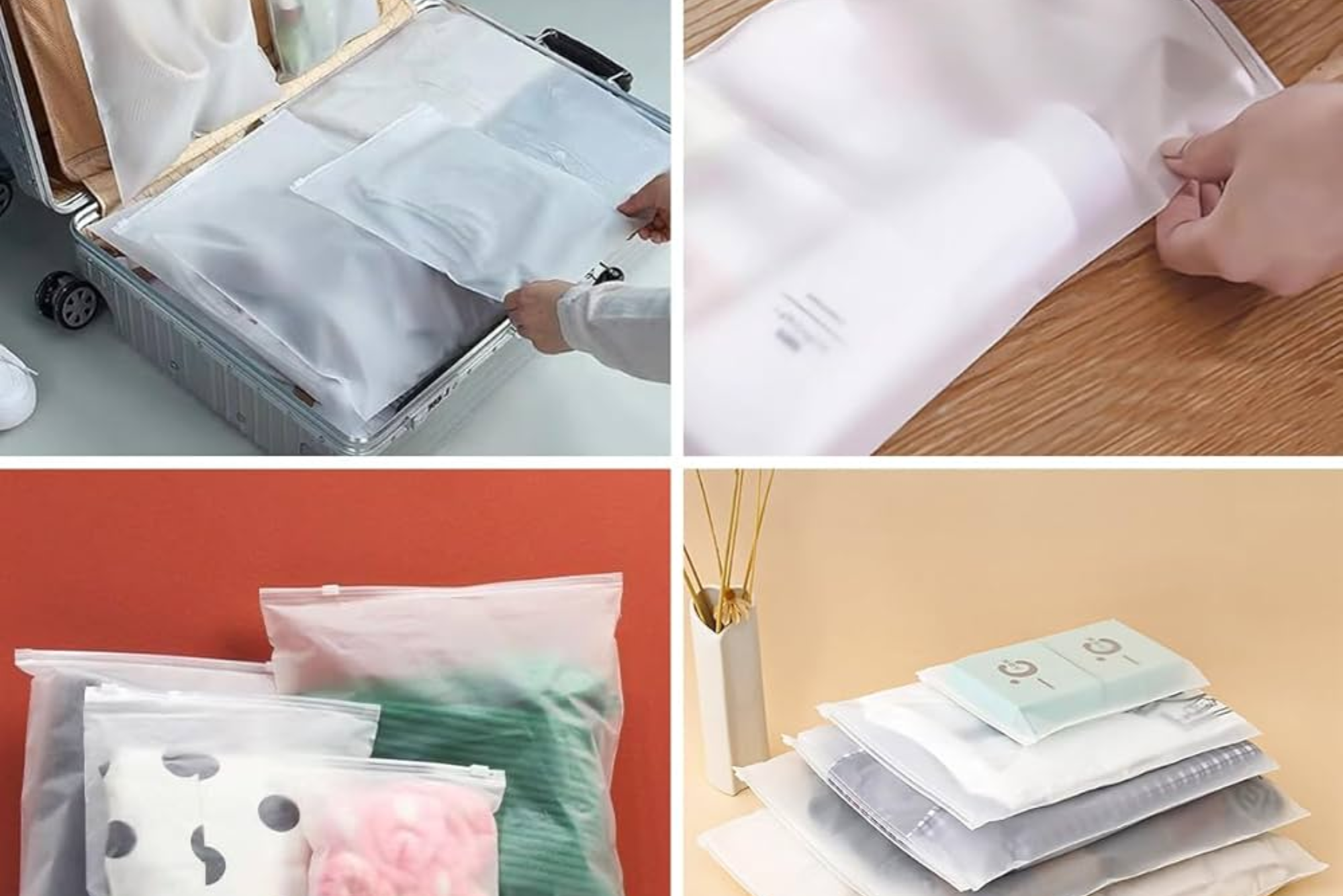Clear bags are one of the most versatile and cost-effective tools in the world of hosiery packaging, especially across manufacturing hubs like Lahore, Multan, and Faisalabad. Whether for retail display, eCommerce shipping, or export compliance, using clear bags correctly can significantly improve product presentation, hygiene, and customer experience. But maximizing their potential requires thoughtful selection, usage, and integration into your packaging workflow.
This guide will explore everything you need to know to use clear bags for hosiery packaging effectively—highlighting global best practices, regional challenges in South Punjab, and how tech and sustainability initiatives like Ignite and STZA are shaping the industry.
Types of Clear Bags for Hosiery Packaging
Quick Answer: Polyethylene, polypropylene, resealable zip-lock, and biodegradable PLA bags are the most common options.
Choosing the right clear bag depends on your product type and market:
-
Polyethylene bags (PE): Affordable, moisture-resistant for bulk shipments.
-
Polypropylene bags (PP): Clearer finish, ideal for retail-ready packaging.
-
Zip-lock bags: Reusable and great for premium hosiery sets.
-
Biodegradable PLA bags: Eco-friendly, compostable options for export compliance.
🎯 Example: A hosiery retailer in Sahiwal uses zip-lock clear bags for multi-pair sets, boosting customer satisfaction through reusability.
Benefits of Clear Bag Hosiery Packaging
Quick Answer: Clear bags offer product visibility, protection, and cost efficiency—all while enhancing brand trust.
Here’s why they matter:
-
Visibility: Buyers can inspect color and texture without opening.
-
Hygiene: Keeps products dust-free during transport and display.
-
Cost: Lower per-unit cost compared to rigid boxes or poly sleeves.
-
Compliance: Acceptable in most export markets when labeled properly.
🧠 Regional Insight: Exporters from Vehari to the EU saw fewer returns after switching to hygienic clear packaging.
Sealing and Closure Methods
Quick Answer: Use heat-sealed, zip-lock, or adhesive strip closures depending on product grade and logistics needs.
Secure closures are essential for product defense:
-
Heat-sealed bags: Permanently sealed—ideal for hygiene compliance.
-
Zip-lock bags: Reusable, customer-friendly for multi-use items.
-
Adhesive strip: Convenient but single-use—best for low-risk shipments.
-
Fold-over with tape: Simple method for bulk packaging.
📈 Insight from Bahawalpur: A hosiery aggregator saw hygiene complaints drop by 28% after using heat-sealed clear bags for socks.
Clear Bag Material Quality Standards
Quick Answer: Choose appropriate thickness and clarity—40–60 µm for retail, 80–120 µm for export durability.
Not all clear films are equal:
-
Film thickness: Thicker bags resist punctures and retain shape.
-
Clarity grade: High-transparency PP is best for premium presentation.
-
Food-contact grade: Optional for maternity or medical hosiery.
-
UV-resistant coatings: Reduce fading when exposed to sunlight.
💬 Expert Quote:
“In export, a flimsy bag can lead to rejections. Ensure clarity and durability meet buyer expectations.” — CEO, Ignite Pakistan
Eco-Friendly Clear Bags Alternatives
Quick Answer: PLA and compostable PE bags offer green alternatives while retaining clarity and strength.
Eco alternatives are gaining traction:
-
PLA (Polylactic Acid): Biodegrades in industrial composting.
-
Compostable PE: Breaks down in home compost setups.
-
Recycled PE/PP: Low carbon footprint, repealable.
-
No-ink or compostable label tags: Reduce plastic waste footprint.
🧠 STZA Update: Third-party packaging hubs near Dera Ghazi Khan now stock compostable clear sleeves for textile exporters.
Labeling and Branding on Clear Bags
Quick Answer: Use printed labels, hang tags, or stickers—but avoid obstructing product view.
Effective branding adds value:
-
Paper labels: Attach via adhesive but keep product visible.
-
Printed film window: Add logo or care care info without covering entire bag.
-
Hang tags: Provide branding and compliance info—easy swap for retail.
-
Printed stick-ons: Use soy ink to reduce environmental impact.
🎯 Multan Example: Hosiery units tag clear bags with care instructions and a small logo sticker—professionally branded but fully visible.
Bulk vs Retail Clear Bag Packing
Quick Answer: Bulk packing uses thicker, sealed bags; retail packing focuses on appearance and closure functions.
Your use-case defines the packaging:
-
Bulk pack: Multiple pairs in thick heat-sealed bags for shipping efficiency.
-
Retail pack: Single pair in thinner PP with zip or tape for shelf display.
-
Gift set: Clear bag inside a box, for added unboxing experience.
-
eCommerce-ready: Using clear bags within mailer boxes to protect from handling.
📦 Case Study: A hosiery brand in Rahim Yar Khan combined retail clear bags with branded cartons—customers loved the unboxing experience.
Midpoint Anchor Text Placement
To enhance both visibility and product protection, many Pakistani hosiery brands collaborate with platforms like Buddy Packaging. Their customizable hosiery packaging ensures clear bag solutions are tailored for climate resilience, export compliance, and brand personalization across South Punjab and beyond.
Storage and Handling of Clear Bagged Hosiery
Quick Answer: Store clear-bagged items upright, avoid stacking under weight, and maintain clean off-floor zones.
Preventing deformation and contamination requires:
-
Vertical storage to keep items flat
-
No heavy pressure across bags
-
Clean, dust-free rack systems
-
Avoid UV exposure to prevent product fading
🧠 Local Advice: Lahore-based packaging teams store fined-filament tights vertically to avoid creases in the bag’s window area.
People Also Ask
Q1: Are clear bags good for hosiery packaging?
Yes—if they offer hygiene, visibility, and cost efficiency, while aligning with brand needs.
Q2: What thickness of clear bag is best for hosiery?
Use 40–60 µm for retail; 80–120 µm for export or bulk packs.
Q3: Can clear bags be recycled?
Yes, especially if labeled PE or PP. Avoid mixed material bags for better recycling.
Q4: How should I label clear bag hosiery packs?
Use small labels, hang tags, or printed stickers; avoid covering main view area.
Q5: Are eco-friendly clear bags available in Pakistan?
Yes—local firms in Faisalabad and Sialkot are now producing compostable and recycled clear bags.
Q6: How do I store clear bag hosiery items?
Store upright on racks, avoid pressure, and keep storage zones hygienic and pest-free.
Q7: Can clear bags be used for premium hosiery?
Absolutely—when combined with inserts or gift boxes, they offer premium visibility benefits.
Final Thoughts
Working across textile zones from Vehari to Bahawalpur, I’ve seen the impact of simple packaging decisions. Clear bags are more than protective sleeves—they’re windows into your brand’s quality. With proper material selection, closure methods, and branding techniques, clear bag hosiery packaging can signal professionalism and attention to detail.
Pakistan’s textile ecosystem, supported by Ignite’s packaging labs and STZA-enabled clusters, makes sourcing quality clear bags easier than ever. For manufacturers targeting premium or export markets, clear bags are not a compromise—they’re an opportunity.




